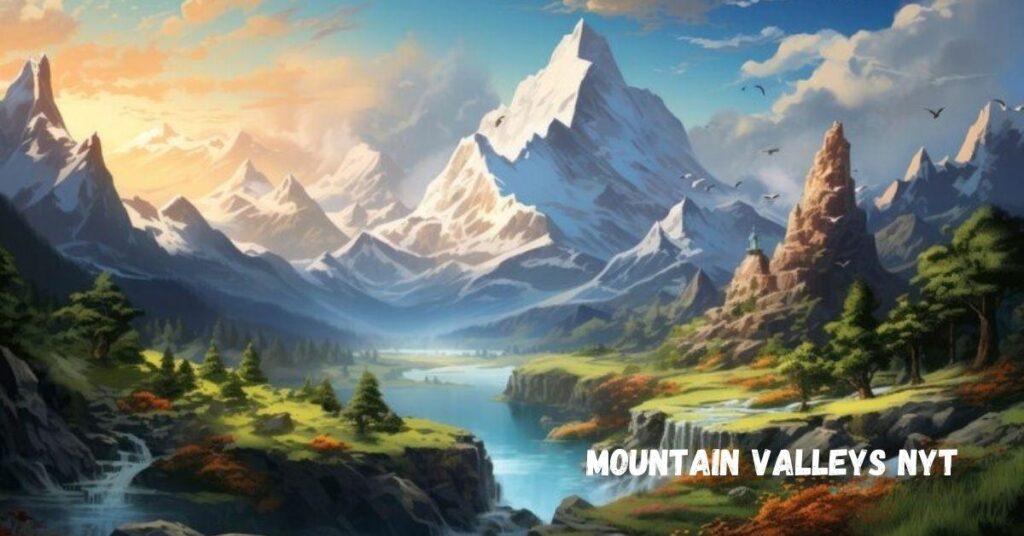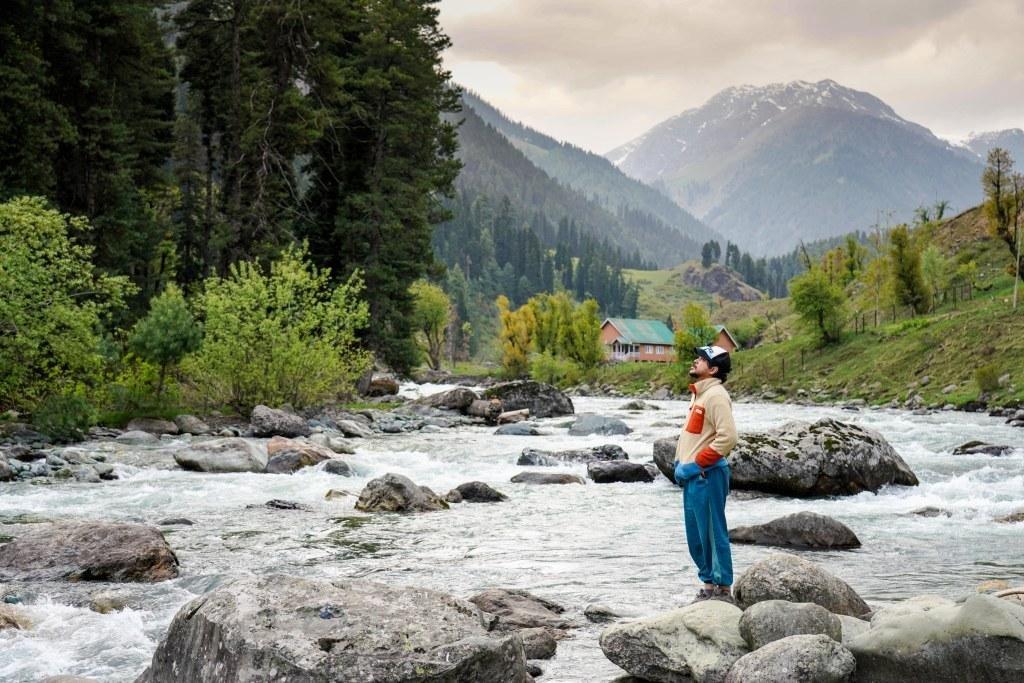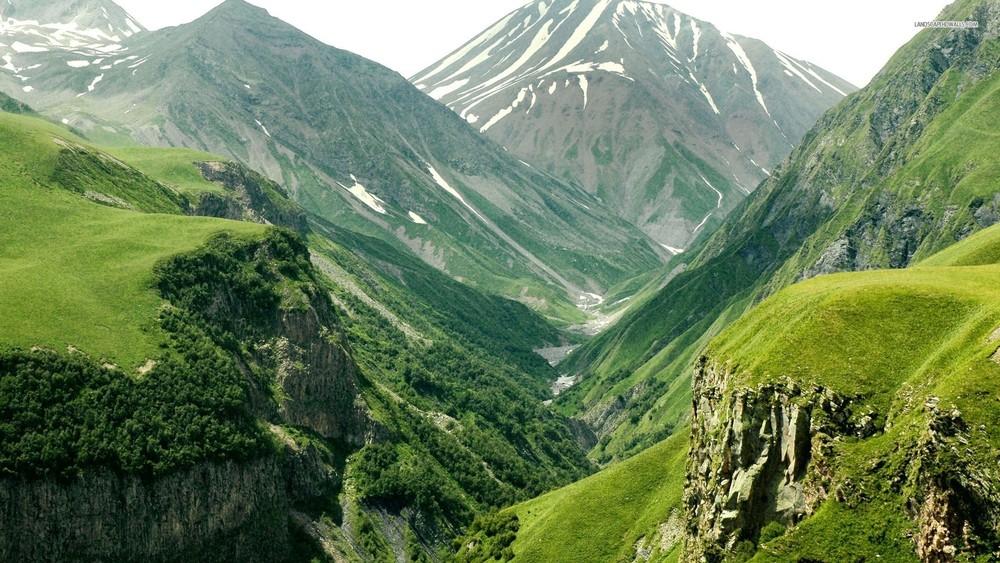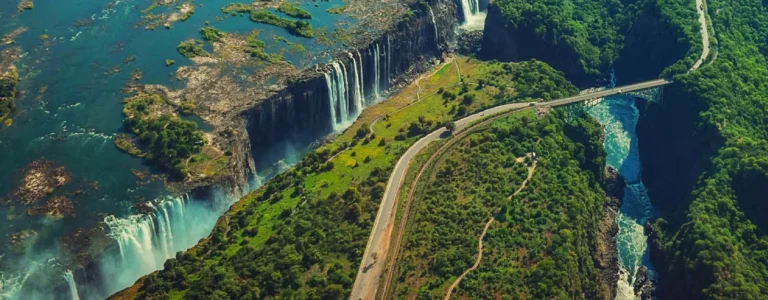
Nestled in the undulating embrace of towering peaks, mountain valleys NYT are nature’s hidden sanctuaries, offering a unique confluence of breathtaking beauty and tranquil refuge. These landscapes, often celebrated for their serene beauty and ecological richness, are much more than picturesque backdrops; they are dynamic environments shaped by geological forces and human history.
Geological Origins: The Birth of a Valley
Mountain valleys NYT are sculpted over eons by a symphony of geological processes. The initial formation typically begins with tectonic activity. As the Earth’s crust shifts and buckles, it can create a valley between rising peaks. In some regions, glacial action further sculpts these valleys. Glaciers, massive rivers of ice, carve out deep U-shaped valleys as they advance and retreat. For instance, the iconic Yosemite Valley in California was shaped by glaciers during the last Ice Age, leaving behind a stunning landscape of sheer granite walls and cascading waterfalls.
In contrast, in regions where tectonic uplift and erosion are predominant, mountain valleys NYT can have a V-shaped profile, created primarily by the relentless work of rivers cutting through the rock. The Grand Canyon in Arizona is a prime example of such a formation, where the Colorado River has carved out an extensive and intricate network of valleys and canyons.
Ecological Diversity: Life in the Valley
Mountain valleys NYT are rich ecological zones, often serving as critical habitats for a diverse array of flora and fauna. The relatively sheltered environment, coupled with unique microclimates, creates niches that support species not found in the harsher environments of the surrounding peaks.
Flora: Vegetation in mountain valleys NYT can vary significantly depending on altitude and climate. Lower elevations might support lush forests of hardwoods and conifers, while higher elevations might be characterized by alpine meadows and tundra. In the Swiss Alps, for instance, valleys are renowned for their colorful wildflower meadows, which provide essential food sources for pollinators such as bees and butterflies.
Fauna: The fauna of mountain valleys is equally diverse. In the Himalayas, the valleys are home to species like the snow leopard and the red panda, adapted to the unique high-altitude environment. In the Rockies, valleys provide critical habitat for elk, bighorn sheep, and a variety of bird species. The seasonal migrations and behaviors of these animals are closely tied to the valley ecosystems, which offer food, water, and shelter.
Cultural Significance: Valleys as Human Habitats

Throughout history, mountain valleys NYT have been more than just natural features; they have been the cradles of human civilization and cultural expression. Their fertile lands and water sources have made them desirable locations for settlements.
Historical Settlements: The valley floors often provide flat land and abundant resources, which early human societies found advantageous for agriculture and settlement. The Indus Valley Civilization, for example, thrived in the fertile river valley of the Indus River, which supported sophisticated urban development and trade.
Cultural Heritage: In many cultures, valleys hold significant spiritual and cultural value. In Tibetan Buddhism, the valley of the Yamdrok Lake is considered sacred, and numerous monasteries and pilgrimage sites are scattered throughout its surrounding landscapes. Similarly, the valleys of the Scottish Highlands have deep cultural resonance, with historical clan lands and traditional Gaelic practices woven into the very fabric of the landscape.
Modern Influences: Today, mountain valleys NYT continue to be centers of cultural and recreational activity. In the Swiss Alps, the valley town of Zermatt has become a global hub for skiing and mountaineering, while its charming architecture and local traditions attract visitors from around the world. In the American West, places like Jackson Hole, Wyoming, are renowned for their vibrant cultural scenes, with art galleries, music festivals, and outdoor activities drawing a diverse range of people.
Conservation Challenges: Preserving Valley Ecosystems

Despite their beauty and importance, mountain valleys NYT face a range of conservation challenges. The pressures of climate change, human development, and tourism pose significant threats to these delicate ecosystems.
Climate Change: As global temperatures rise, the glaciers that shape many mountain valleys are retreating, altering the flow of rivers and affecting the habitats of species that rely on cold, glacial waters. The melting of glaciers also impacts water resources for downstream communities and ecosystems.
Human Development: Urbanization and infrastructure development can encroach on valley landscapes, leading to habitat fragmentation and pollution. Roads, resorts, and other infrastructure can disrupt local wildlife patterns and degrade water quality. In some regions, the construction of hydroelectric dams in valleys can alter natural river flows and impact the surrounding environment.
Tourism: While tourism can bring economic benefits to valley communities, it also poses risks. Increased foot traffic, pollution, and infrastructure development to accommodate tourists can strain local resources and ecosystems. Sustainable tourism practices are essential to mitigate these impacts and preserve the natural beauty of mountain valleys.
Sustainable Practices: Ensuring the Future of Valleys

Addressing these challenges requires a concerted effort to implement sustainable practices and conservation strategies. Several approaches can help ensure the long-term health and vitality of mountain valleys:
Protected Areas: Establishing protected areas and national parks can help preserve critical habitats and prevent destructive activities. In the United States, the National Park Service manages several mountain valleys, such as those in the Great Smoky Mountains and the Rocky Mountain National Park, to protect their natural and cultural resources.
Restoration Projects: Ecological restoration projects can help rehabilitate damaged areas and restore natural processes. For example, efforts to reintroduce native plant species and control invasive species can help restore the balance of valley ecosystems.
Sustainable Tourism: Promoting eco-friendly tourism practices, such as low-impact hiking, responsible wildlife viewing, and supporting local conservation initiatives, can help minimize the environmental footprint of visitors. Educating tourists about the ecological and cultural significance of the valleys can foster greater appreciation and respect for these landscapes.
Climate Action: Addressing climate change through global and local initiatives is crucial for preserving mountain valleys. Efforts to reduce greenhouse gas emissions, promote renewable energy, and adapt to changing conditions can help mitigate the impacts of climate change on these sensitive environments.
Conclusion: The Timeless Allure of Mountain Valleys NYT
Mountain valleys NYT, with their majestic landscapes and rich biodiversity, continue to inspire awe and wonder. They serve as reminders of the intricate and delicate balance of natural systems and the profound connection between human cultures and the environment. As we face the challenges of modern times, it is essential to cherish and protect these natural treasures, ensuring that they remain vibrant and resilient for future generations.
In celebrating the beauty and significance of mountain valleys NYT, we not only honor their past but also embrace the responsibility of safeguarding their future. The enchantment of these landscapes lies not just in their grandeur but in the enduring legacy they offer—a legacy of harmony between nature and humanity, a testament to the timeless allure of our planet’s most extraordinary places.


